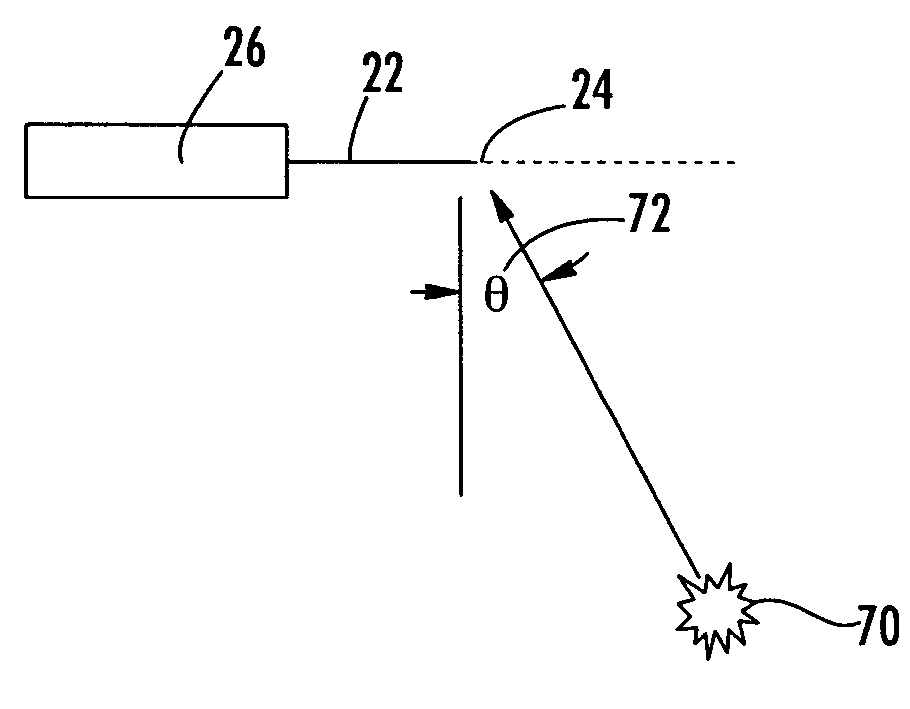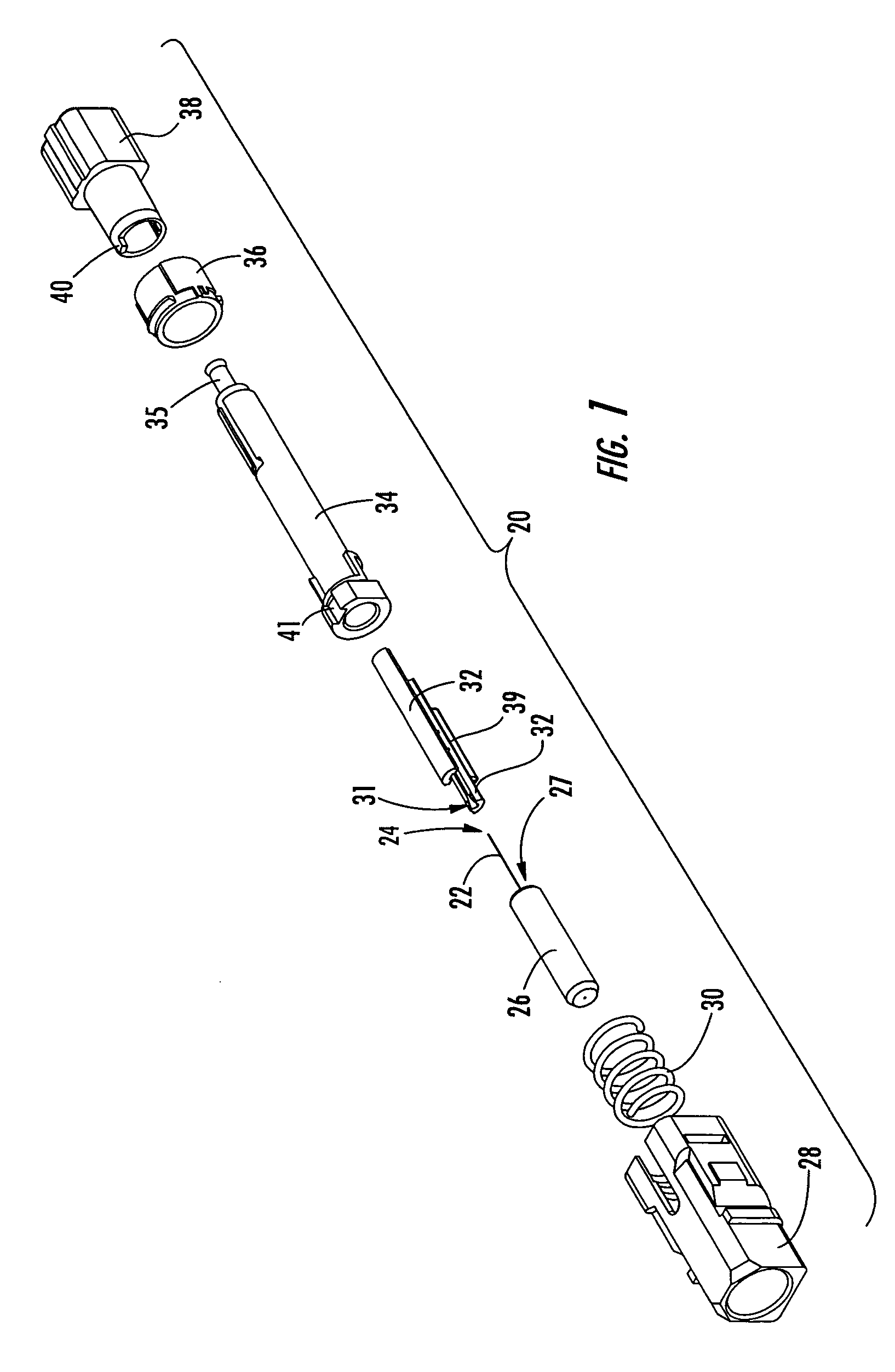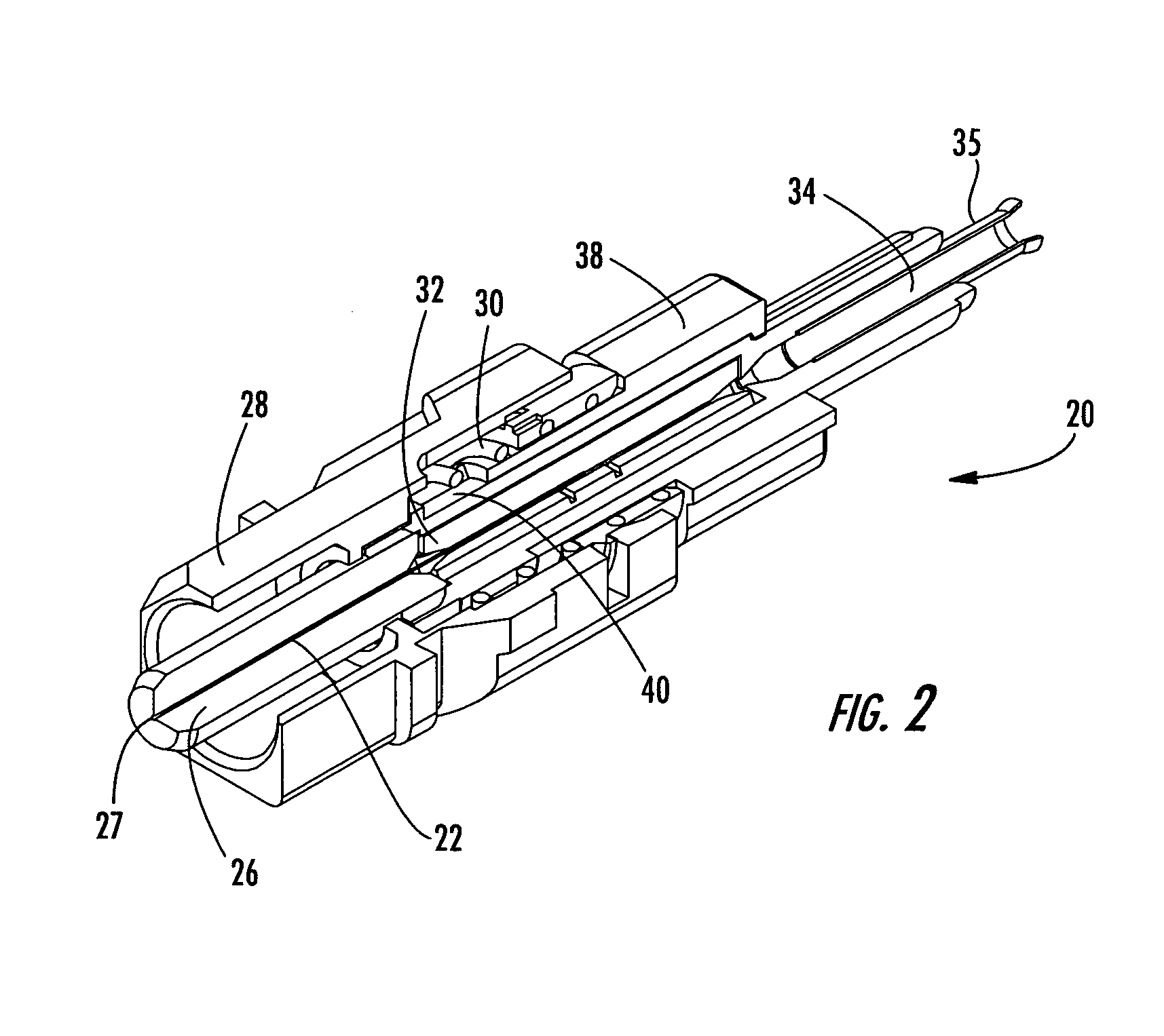Method of making an optical fiber by laser cleaving
a laser cleaving and optical fiber technology, applied in the field of connecting devices, can solve the problems of increasing attenuation, mechanical cleaving has an inherent glass defect zone, and mechanical cleavers typically produce sharp edges between the cleaved endface and the outer diameter of the fiber, so as to reduce or eliminate the glass defect zone and minimize the core gap of the mechanical splice
- Summary
- Abstract
- Description
- Claims
- Application Information
AI Technical Summary
Benefits of technology
Problems solved by technology
Method used
Image
Examples
Embodiment Construction
[0022]The present invention will now be described more fully hereinafter with reference to the accompanying drawings in which exemplary embodiments of the invention are shown. However, this invention may be embodied in many different forms and should not be construed as limited to the embodiments set forth herein. These exemplary embodiments are provided so that this disclosure will be both thorough and complete, and will fully convey the scope of the invention to those skilled in the art. Like reference numbers refer to like elements throughout the various drawings.
[0023]Referring now to the drawings, FIG. 1 shows an exemplary embodiment of a field-installable connector 20 including a stub optical fiber 22 processed using a laser. In particular, the stub optical fiber 22 is cut and the endface 24 of the stub optical fiber 22 is shaped using a laser, such as a focused-beam CO2 laser. The laser processed stub optical fiber 22 may replace a mechanically cleaved stub optical fiber in a...
PUM
| Property | Measurement | Unit |
|---|---|---|
| angle | aaaaa | aaaaa |
| angle | aaaaa | aaaaa |
| diameter | aaaaa | aaaaa |
Abstract
Description
Claims
Application Information
 Login to View More
Login to View More - R&D
- Intellectual Property
- Life Sciences
- Materials
- Tech Scout
- Unparalleled Data Quality
- Higher Quality Content
- 60% Fewer Hallucinations
Browse by: Latest US Patents, China's latest patents, Technical Efficacy Thesaurus, Application Domain, Technology Topic, Popular Technical Reports.
© 2025 PatSnap. All rights reserved.Legal|Privacy policy|Modern Slavery Act Transparency Statement|Sitemap|About US| Contact US: help@patsnap.com



